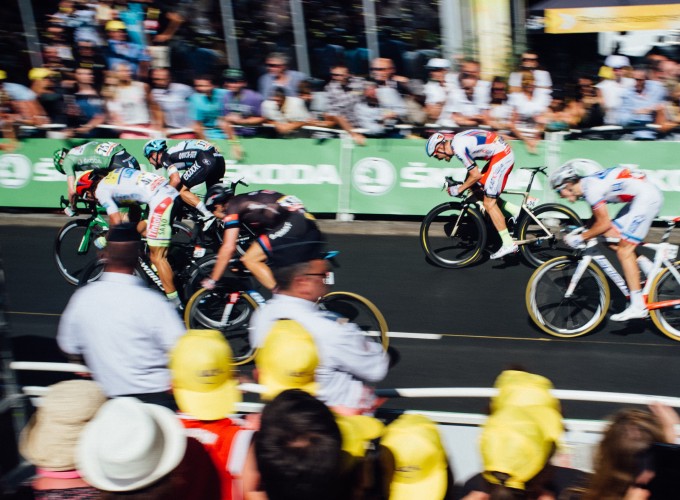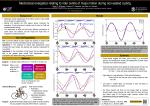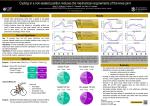THE EFFECT OF LATERAL BICYCLE SWAY AND RIDING POSTURE ON MECHANICAL EFFECTIVENESS AND EFFICIENCY IN CYCLING
Cyclists often spontaneously switch from a seated to non-seated position when they need to produce high pedal torque and power (i.e. during steep climbs, accelerations and sprinting). Existing evidence shows that adopting a non-seated position can improve uphill time trial performance and increase peak power output during sprint cycling, yet the mechanisms underpinning these performance advantages remain unclear. It seems likely that the kinematic differences between the seated and non-seated position; notably the anterior shift in the rider’s centre of mass and more extended lower limb position, will impact the pattern of power production and absorption within the lower limb. Insight into this critical flow of energy at a joint level may provide insight into why riders select the non-seated position. The first study of four within the thesis aims to further our understanding of the non-seated position by providing a joint-level, inverse dynamics analysis of lower limb mechanics during high-power output cycling at two different cadences.
Previous research and field observations of cyclists during non-seated cycling also suggests that significant vertical displacement of the rider’s centre of mass (CoM) occurs over each pedal cycle, however this is yet to be quantified. Raising and lowering the CoM against gravity will influence the energetics of cycling because it requires work to increase the gravitational potential energy of the rider. The requirement to raise the CoM under different combinations of power output and cadence, as well as the impact this may have on energetics is presently unknown. The second study will aim to show that significant vertical fluctuations occur during non-seated cycling and are an important consideration for non-seated cycling performance. Completing these biomechanical analyses on the non-seated position are an important foundation to then investigate the effect of lateral bicycle sway on lower limb mechanics and center of mass fluctuations during non-seated cycling.
Field observations have also shown that elite cyclists use a pronounced lateral swaying motion of the bicycle during critical periods of competition when in the non-seated position. Besides its apparent role for ensuring dynamic balance of the rider-bicycle system, little is known about how lateral sway effects cycling efficiency or effectiveness. The third study aims to show the effects of lateral bicycle sway on lower limb mechanics by comparing joint power contributions within the lower limb during three different ‘constraint’ conditions where the lateral dynamics of the bicycle are either unrestricted, externally constrained by a trainer or self-constrained by the rider. This same protocol will be used for the final study, which will investigate the effects of these ‘constraints’ on center of mass fluctuations. The insights from these studies will establish a new understanding of the underlying mechanics and energetics of the non-seated position and the role of lateral bicycle sway during high-power output cycling.




